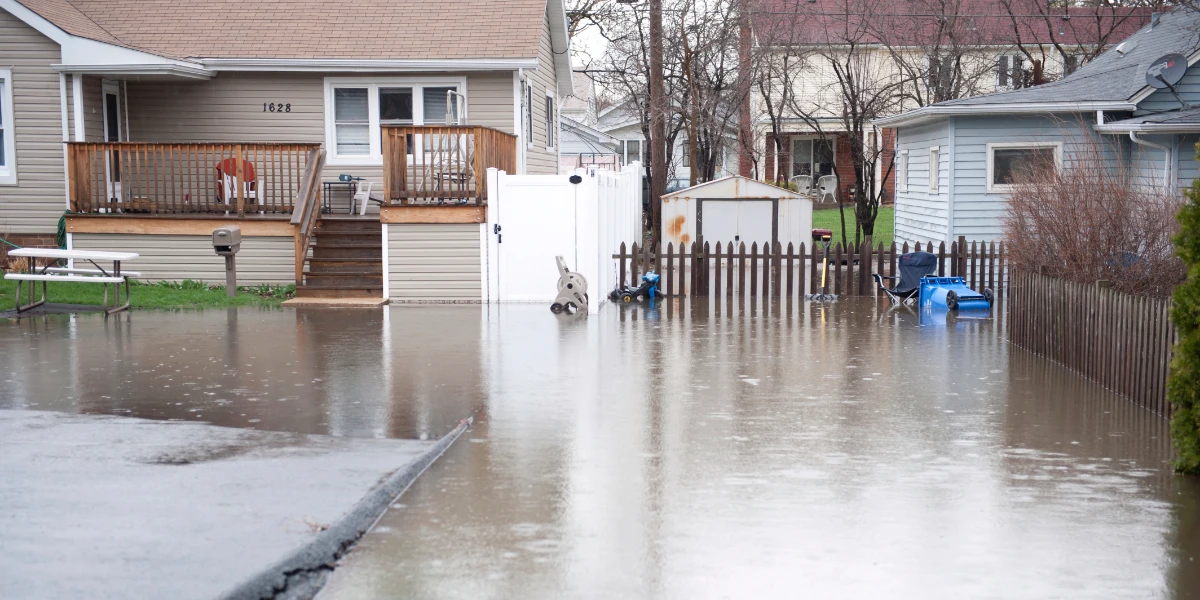Preparing your home for potential flooding is crucial, especially in flood-prone areas. Here are nine detailed strategies to safeguard your residence against water damage.

Ensure Adequate Flood Insurance Coverage
While many assume that their standard homeowner’s insurance policy covers flood damage, this is often not the case. Flood insurance is a separate entity, essential for both high-risk and moderate-to-low-risk areas. It’s a critical safety net that can save you tens of thousands in the event of flooding. Before purchasing a home or if you’re residing in an area with any flood risk, assess your need for flood insurance to protect your property.
Install a Sump Pump with Battery Backup
A sump pump is your first line of defense against basement flooding, channeling water away from your home’s foundation. However, during severe storms, power outages are common, rendering an electric sump pump useless. A battery backup ensures that your sump pump continues operating, safeguarding your basement even during power failures.
Implement Flood Sensors for Early Detection
Flood sensors act as an early warning system, detecting the first signs of unwanted water in your home. By placing these sensors in critical areas, you can respond swiftly to mitigate damage. They’re particularly useful for detecting hidden leaks or the early stages of flooding, allowing you to address the issue before it escalates.
Install Automatic Shut Off Valves
An automatic shut off valve is a proactive measure that cuts off your home’s water supply in the event of a detected leak, preventing potential flooding. This is particularly useful in avoiding water damage from burst pipes or appliance failures. Combined with flood sensors, this system provides a robust defense against water damage.
Elevate Your Water Heater and Major Appliances
Floodwaters can severely damage your home’s essential systems and appliances. By elevating your water heater, furnace, and major appliances, you reduce the risk of flood damage. This is particularly crucial in areas where even minimal flooding can lead to significant repair costs.
Create Physical Barriers with Sandbags or Floodwalls
Physical barriers like sandbags, beams, or floodwalls can redirect or halt the flow of water into your property. While not always a viable long-term solution, these barriers can provide crucial protection during unexpected or sudden flooding events.
Develop a Comprehensive Emergency Flood Plan
Having a well-thought-out emergency plan ensures that every household member knows what to do in the event of a flood. This plan should include evacuation routes, safe meeting points, and procedures for protecting your property. Regular drills can help ensure that your plan is effective and understood by all.
Protect Important Documents in Waterproof Containers
Vital documents such as insurance policies, property deeds, and personal identification should be stored in waterproof containers. In the digital age, it’s also wise to have digital backups stored securely online or in a cloud service, ensuring access even if physical copies are destroyed.
Prepare a Well-Stocked Emergency Kit
An emergency kit is essential not just for floods, but for any natural disaster. It should contain non-perishable food, water, first aid supplies, flashlights, and other essentials. Ensure it’s stored in an easily accessible location and that all family members know its contents and how to use them.
By adopting these comprehensive strategies, you can significantly enhance your home’s resilience against flooding, protecting your property and ensuring the safety and well-being of your family.